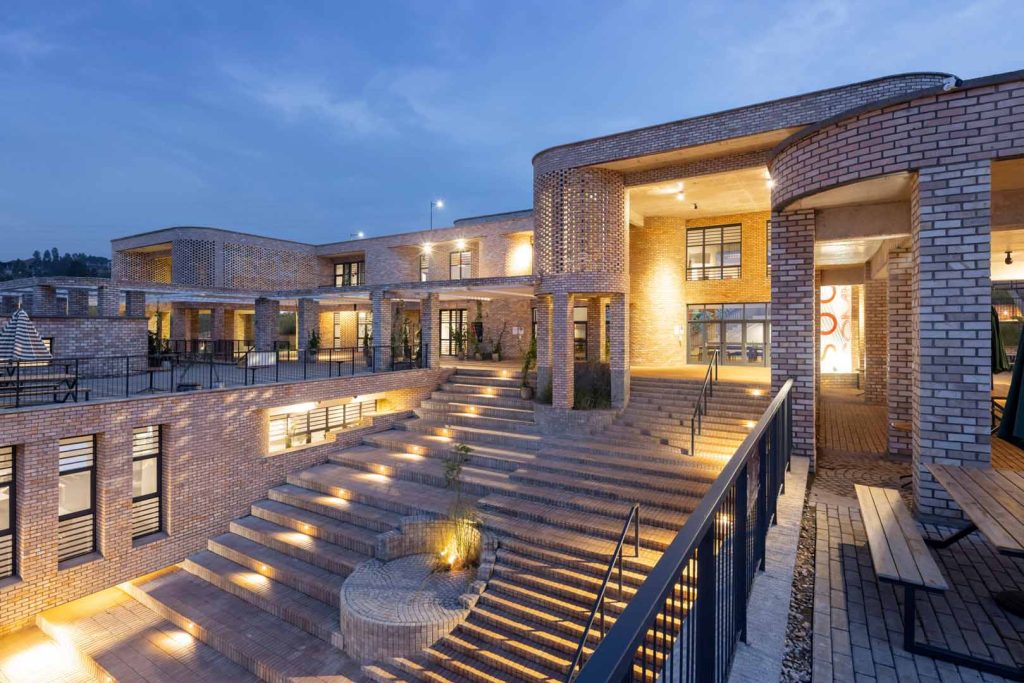The African Leadership University’s (ALU) Kigali Innovation City Campus is a purpose-built school campus in Kigali, Rwanda, designed to amplify self, peer, and facilitated learning for over 1,200 students. ALU aims to create transformational leaders by encouraging students to declare a mission, not a major. The university is pioneering a new approach to higher education with a holistic experience designed to make students successful entrepreneurs, leaders and better citizens of the world.
Cause
The aspirational route for top African students seeking higher education is to leave the continent and seek a Western-based education in North America or Europe. After graduation, many do not return leading to brain drain. Those that do return are less suited for the unique challenges they face at home. Understanding this, ALU seeks to develop a new generation of home-grown African leaders with more relevant knowledge, skills and relationships for Africa.
Method
Through in-depth engagement with leadership, faculty and staff, and students, MASS Design Group developed a site-specific program, masterplan, and architectural designs that create spaces that work in tandem to support students across each phase. MASS worked with local suppliers to clad the campus in sustainably fired and uniquely white clay bricks. The building facade’s shaded windows and clerestories provide natural ventilation and daylighting through the majority of the building for Kigali’s comfortable climate.
Impact
MASS leveraged ALU’s fundamental learning model to help inform how the campus and spaces were designed for inspiration, access, and networking. The modular design features large common spaces and work hives connected throughout by small pods for peer group work and self-learning. The terracing of the design of the building and the landscape responds to the site’s steep slope and regional climate by creating a multi-level learning environment in a design that pursues spatial efficiency by weaving interior and exterior spaces. A modular and structural grid creates open spaces that allow for greater flexibility of use. Circular study pods were assigned to the grid and distributed across the campus within or adjacent to larger work hives and common areas. The modular design reflects ALU’s unique learning cycle with spaces dedicated to self, peer, and facilitated learning and an interconnected campus to support discovery.

